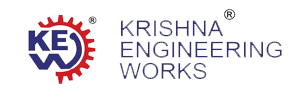If you run a textile processing line, fabric finishing unit, or export-oriented setup, a Stenter Machine becomes one of the most essential pieces of equipment. But most explanations online are too technical.
This guide is written in simple, clear, and non-engineering language, so anyone can understand:
- What a Stenter Machine is
- How it works
- Why global industries use it
- Steps of the process
- Buying checklist for international buyers
Let’s keep it clean, factual, and easy to read.
1. What Is a Stenter Machine?
A Stenter Machine is a large textile finishing machine used to:
- Dry the fabric
- Heat-set the fabric
- Control width
- Remove wrinkles
- Improve GSM and appearance
In short:
- It makes the fabric stable, flat, and finished before final processing or packing.
- It is used in knitted, woven, non-woven, denim, and technical textiles industries worldwide.
2. Why Is a Stenter Machine Important?
For any export-quality fabric, consistency is everything.
A Stenter helps you achieve:
- Uniform width
- Even and controlled drying
- Smooth and wrinkle-free surface
- Better color fastness
- Higher productivity
- Stable fabric structure
This is why global buyers prefer manufacturers who use modern Stenter Machines.
3. How a Stenter Machine Works – Step-by-Step
- Below is the simplest possible breakdown of how a Stenter Machine works.
▶ Step 1: Fabric Entry
- The fabric enters the machine from a padding mangle, batcher, or other feeding system.
- Sensors keep the fabric straight and tension-balanced.
▶ Step 2: Edge Holding With Pins or Clips
- The edges of the fabric are held by:
- Pins (sharp grip)
- Clips (mechanical grip)
- This ensures the width remains fixed while the fabric moves forward.
▶ Step 3: Width Adjustment
- The operator sets the required fabric width on the control panel.
- The machine stretches or relaxes the fabric accordingly.
This helps achieve:
- Desired width
- GSM control
- Shrinkage control
▶ Step 4: Hot Air Drying / Heat Setting
- The fabric passes through multiple heating chambers.
- Each chamber circulates hot air from top and bottom.
This stage helps:
- Dry the fabric
- Remove moisture
- Heat-set synthetic fibers
- Improve dimensional stability
▶ Step 5: Overfeed (Optional)
Overfeeding allows extra fabric to enter the chamber, helping:
- Increase GSM
- Improve softness
- Reduce fabric tension
▶ Step 6: Cooling Zone
- After heat-setting, fabric passes through a cooling zone so the structure becomes stable.
▶ Step 7: Fabric Exit & Winding
The finished fabric is collected in:
- Batcher
- Plaiter
- Winder
Now the fabric is ready for printing, dyeing, cutting, or packaging.
4. Where Stenter Machines Are Used (Applications)
Stenter Machines are used in:
- Dyeing units
- Printing mills
- Knitted fabric processing
- Denim finishing
- Non-woven processing
- Technical textile finishing
- Home textiles manufacturing
They are common in textile factories across the USA, Turkey, India, China, Mexico, Brazil, Indonesia, and Vietnam.
5. Benefits of Using a Modern Stenter Machine
✔ Better fabric quality
✔ Precise width control
✔ Smooth and wrinkle-free finish
✔ Consistent GSM
✔ Improved production speed
✔ Energy-efficient heating
✔ Less wastage
6. What International Buyers Should Check Before Purchasing
A simple buying checklist:
✔ Chamber type & temperature range
✔ Heating system (gas / thermal oil / steam / electric)
✔ Maximum speed (m/min)
✔ Pin or clip chain type
✔ Fabric width capacity
✔ PLC control & automation level
✔ Energy efficiency features
✔ Safety protections
✔ After-sales support & spare parts availability
7. Common Issues a Stenter Machine Solves
- Fabric skewing
- Uneven shrinkage
- Moisture imbalance
- Poor width control
- Wrinkles
- Low GSM or unstable fabric
- Uneven color penetration
8. Why Global Textile Plants Prefer Indian Stenter Manufacturers
India is known for:
- Strong engineering quality
- Competitive pricing
- Faster delivery
- Easy spare parts availability
- Customization options
- Reliable after-sales support
9. FAQs
Q1: What is heat setting in a Stenter Machine?
- Heat setting stabilizes fabric so it does not shrink or deform later.
Q2: Which fabrics need Stenter processing?
- Knitted, woven, polyester, cotton blends, denim, and technical textiles.
Q3: How many chambers does a Stenter have?
- Typically 6 to 12 chambers, depending on production capacity.
Q4: What speed does a Stenter operate at?
- Ranges from 10 m/min to 120 m/min, depending on model.
Q5: Does a Stenter reduce fabric shrinkage?
- Yes, heat setting helps control and minimize shrinkage.
A Stenter Machine is essential for any textile finishing process.
It ensures better quality, controlled width, smooth finish, and high stability — all critical for export-grade fabrics.
Understanding the working process helps buyers make better decisions and improves confidence for international inquiries.
If you need Stenter Machines or spare parts, Here is how you can contact us:
📞 Call / WhatsApp: +91 8460728298
📧 Email: info@kewindia.com
